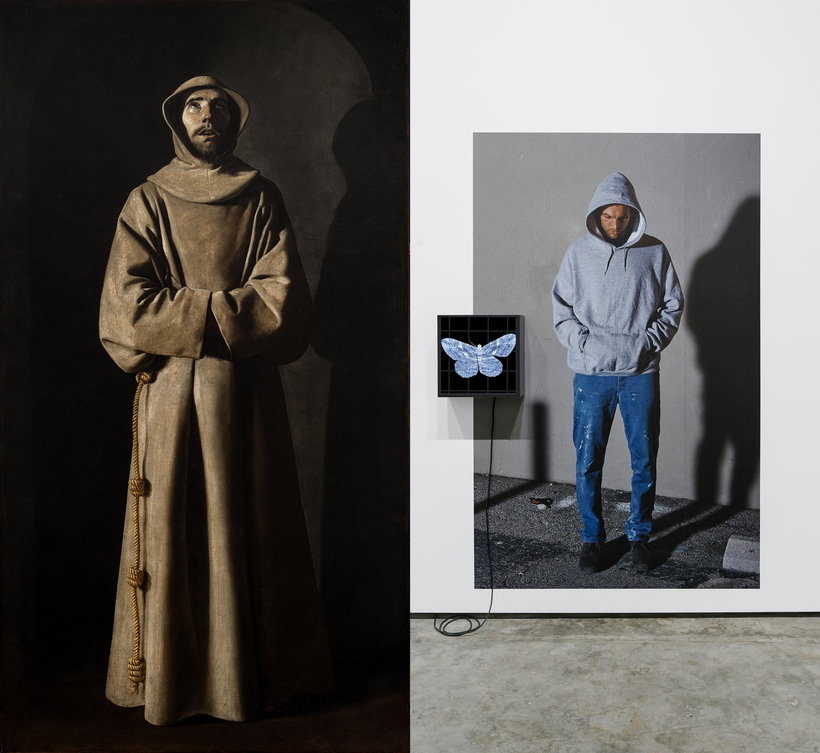Admiring the 17th-century Spanish artist Francisco de Zurbarán, Henri Matisse commented on “the simultaneously light and pastose treatment given to the bone-white capes in which he dressed his monks.” For those unfamiliar with the term “pastose”—as I was—it derives from the Italian pastoso, meaning doughy, like pasta. Indeed, Zurbarán’s subtle matte whites and his panoply of rich blacks fortify and sustain us. In their vibrant contrasts, these two colors also evoke virtue and evil, a significance that was essential to this wonderful painter, whose canvases invoke a code of behavior in keeping with their religiosity.
“Zurbarán: Reinventing a Masterpiece,” opening next Thursday at the Musée des Beaux-Arts de Lyon, provides a rare opportunity to see the artist’s work in the range and depth it deserves. Located near the Saône river in this small and charming city, known for its history of silk-making and unequaled cuisine, the Musée is one of those marvelous mid-sized museums that makes art readily accessible. A visit there followed by a walk to one of the local bistros near the river—order pâté en croute, quenelles, and tarte aux pralines—combines some of life’s greatest pleasures. Zurbarán’s touching canvas of a beatific sheep with curly white hair; his poetic and exquisitely crafted still lifes, featuring crystalline vessels and pieces of fruit; and his great religious paintings—with works such as these only two hours from Paris, Lyon is the place to be.

This exhibition is also presenting Zurbarán’s three paintings of Saint Francis of Assisi, dead but seemingly alive—the first time that they have ever been shown together. One of them, recently restored, has been in the permanent collection in Lyon for over two centuries; the other two were lent by the Museu Nacional d’Art de Catalunya, in Barcelona, and the Museum of Fine Arts Boston.
The curators in Lyon point out that “the body of Saint Francis (circa 1182–1226) appears here as Pope Nicholas V (1397–1455) is said to have discovered it in the crypt of the Basilica of San Francesco in Assisi (Italy) in 1449: standing, eyes open and turned towards heaven, like a living person.” The draperies of his garment are a feat of verisimilitude, his face the image of otherworldly purity. Saint Francis was a remarkable character. The curators continue: “Around the age of 25, after a dissipated youth, this son of a rich cloth merchant committed himself entirely to the Christian life. He renounced all material wealth, living in abject poverty, and devoted himself to caring for lepers and the poor.”

In verses dedicated to the artist, the poet Théophile Gautier evoked both Zurbarán’s technical mastery and the power of his portrayals while emphasizing the nearly monochromatic palette: “Their long, wan garb, how doth he stiffly trace! / How gives it the sad aspect of a shroud / … All true to nature does his art design. / Two hues alone, wan light and darkest shade.”

Zurbarán was an artist’s artist and a source of inspiration for some of the greatest couturiers of the modern era. Hence, the Musée will present related work by contemporary artists such as Andres Serrano and Michaël Borremans, along with magisterial garments derived from the tunic in which Zurbarán dressed Saint Francis: a raincoat by Cristóbal Balenciaga, a long dress in wool crepe by Madame Grès, and a hooded capelet by Azzedine Alaïa. Paraphrasing the highest accolade from the Guide Michelin, Lyon in Zurbarán season is more than worth the trip.
“Zurbarán. Reinventing a Masterpiece” will be on at the Musée des Beaux-Arts de Lyon from December 5, 2024, to March 2, 2025
Nicholas Fox Weber is the executive director of the Josef & Anni Albers Foundation and the author of 15 books, including biographies of Balthus and Le Corbusier


